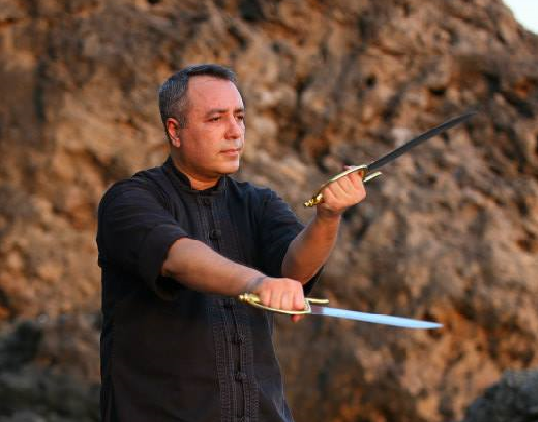

Baat Cham Dao - Wing-Chun Butterfly Swords
Baat – ‘eight’, Cham – ‘slash/cut/chop’, Dao – ‘broad sword/saber’, Baat-Cham-Dao literally means eight-point-slashing-swords. This type of weapon originates from the southern part of China. One uses for blocking, one uses for attacking, and both Dao often are used in a pair — also known as butterfly swords.
This weapon provides training in mobility and further enhances precision in movement. Practicing the knives is comparable to practicing the pole and dummy techniques. The principle is to overcome the opponent with fast, simple, straightforward strikes. The horse stance must be extremely mobile, agile and the energy forward requires total body commitment and coordination. The weapon enhances the application and exertion of qi with the wrist and forearms, which improves your skills in hand combat. Because the weapons extend your energy range, you ability in Chi-Sao and combat will be vastly improved.
In order for the knives to be effective against longer weapons, the emphasis on footwork and controlling the centerline will improve your overall Wing-Chun Kung-Fu tremendously. Understanding and mastering the nature of each technique will lead to greater insights into the principles of economy of motion, recovering the centerline and unity of footwork, hip and hand movements.
Few Wing-Chun families can claim the knowledge existent within our family in all aspects of Wing-Chun; the knives are seen as the treasure of the system. The knives give the student the attitude of relentless pursuit until the opponent is incapacitated.
These butterfly swords were initially very different from the Wing-Chun swords of today. They were developed in the early days by the Siu Lam monks for training and defense. In harmony with Buddhist philosophy and belief, the monks designed this type of weapons for parrying, disarming, and crippling the assailant and not for killing. Consequently, the blade was structured with dull edges on top and bottom to be used for interception of an opponent’s weapons, and the length is from the elbow to mid-palm. The Manchurian Government officials patrolled in the streets and bullied the people, and monks were not excluded.
The butterfly sword was considered a small weapon in contrast to its counterparts. This was intentional as the monks wished to conceal the sword beneath their robes without being spotted by the government officials while traveling around the public. The first 3 inches (the curved part) of the blade were sharpened. The remainder of the blade, top and bottom, was solid and dull for parrying and non-lethal striking purposes. The handle of the sword sported a guard in the shape of a hook with an open end. The monks used this guard to trap an opponent’s weapon and quickly disarm him. The monks created the dull blade on the butterfly sword not only because it was a weapon of self-defense, but also because the dull blade added thickness for extra support to the structure of the sword. The sharpened blade on the butterfly sword was useful for chopping but because of the thin edge of the sword, the blade could easily be damaged or broken when defending against a longer, heavier weapon in combat. For this reason, the Siu Lam monks preferred the sturdier blade. Today's Wing-Chun sword techniques still emphasize parrying, obstructing, or intercepting an opponent's weapon. These remain highly consistent with the original design and intent of the blade itself.
The Baat Cham Dao set is the extension of the arm (using Lap Cham Dao, Tan Cham Dao, Sheung Gaun Dao, Kwun Bong Dao, Yat Chi Dao, Lan Dao, etc.) and its main focus is the development of the practitioner’s wrist and forearm to increase flexibility, strength and power. Each of the sections teaches the student to deal with eighteen different types weapons, coming in from different angles and also with multiple attacks. During the training, the practitioner is also taught ‘Chi Dao’ – the ‘sticking knives’ method — that increases the ability to control the opponent’s weapons, find the opening gate, attack the opponent’s wrist, and finish him with vital strikes at throat, eyes, groin, under arms, knees, etc.